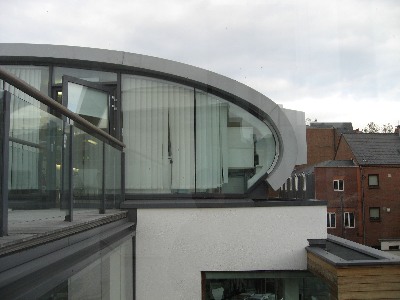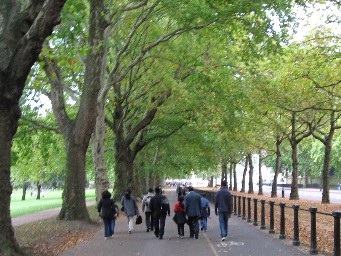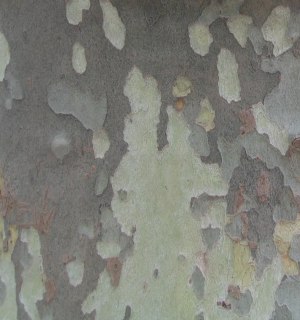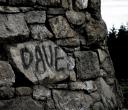I assume that only the most inquisitive American sports fans know that the 2007 Rugby World Cup is in its final stages. In fact, I’d guess that more Americans are familiar with Quad Rugby (aka murderball) than the US Rugby team. The venues for the quadrennial World Cup are mostly in France, with a few fixtures in Scotland and Wales. The US team lost all four of its pool matches, and thus didn’t get to compete in the knock-out stage.
The Irish were crazy about World Cup Rugby — especially Dublin and especially especially where we live. This appears to be part of a general disposition to support any national team with a fighting chance, which was intensified in our area by the residents’ experience with rugby as schoolchildren. As in the US, supporting a team includes scrutinizing its players and managers to an irrational extent.
Team Ireland were considered the sixth strongest team in the world prior to the World Cup. Advertisements from the team’s sponsors began appearing all over Dublin as the team played Namibia and Georgia. Ireland won both matches, but they didn’t look very good. Still, Ireland rugby jerseys became increasingly ubiquitous on the city’s streets. Opinions about the team and its coach, Eddie O’Sullivan, dominated the TV, the radio, and ordinary conversation. The next match was against France, the third best team (and admittedly on a different level of play).
Anita and I resolved to watch it at our local pub, the Pembroke. Neither of us understood the game’s rules, although we’d shared a bar with the University of Illinois’s rugby team during our undergrad years. But we wanted to participate in a national event. We arrived as the French national anthem was playing. (I found myself signing along automatically — oops.) When I write, “we arrived,” I mean that we walked right up to the area of the bar from which a TV was visible, and then hit a wall of human bodies. We had as much a chance as an American fly-half against a New Zealand fullback.
We walked to the back entrance, and found some space in the “outdoor” terrance. Most Irish pubs have outdoor spaces to accommodate smokers, and the Pembroke’s really pushes the definition of “outdoor.” Aside from the smoke, it was comfortable, and had a small TV in one corner. We made friends as Ireland played to a lackluster loss against France. (Our new friend is a story for another day.) Even to my novice eyes, Ireland looked badly outclassed. The radio the next day confirmed my observations.
Ireland were expected to win against Namibia and Georgia, and rack up enough points to survive the predicted losses to France and Argentina. Of the last two, Argentina were the most evenly matched with Ireland. After the loss to France, Ireland would have to beat Argentina resoundingly in order to continue to the knock-out round. It was possible, given Ireland’s performance before the World Cup began, but hardly if they continued their Cup performance.
One of the prominent ads portrayed the Ireland team pushing a famous Dublin pub to the Eiffel Tower. That pub, Doheny & Nesbitt’s, is in our neighbourhood. We’d stopped there several times. It had a reputation as the pub of choice for government-types, reporters, and generally upper-class Dubliners. So it made sense that it was the rugby pub of choice — not because it was well-suited to watching rugby, but because it catered to the type of people who support rugby. Still, it was amusing to see one of “our” pubs on billboards all over Dublin (and beyond).
So when the Argentina match fell on Doug’s last evening in Dublin, we proposed watching the match in Ireland’s premiere venue for rugby fans. It was just as crowded as the Pembroke was two weeks previous, but that’s part of the fun!
Our friend Kathryn secured a seat along one wall well before the match began, and Anita joined her. After Doug and I finished dinner, we walked to the pub. Doug’s height was helpful, because we watched the first half from doorways into the TV-equipped rooms. We watched the second half near the spot that Kathryn secured for us, with the emotions of the crowd literally pressing in on us.
They were not happy emotions. Ireland occasionally threatened to go ahead of Argentina on points, but never looked like they could control the game. The crowd was frustrated, but no more than a typical, partisan bunch of American professional football fans. On reflection, the people at the Pembroke were more into the game — maybe too many tourists (like us) had seen the billboards.
I wasn’t surprised when the vitrol hit the media, just as it would in the US. What shocked me was the number of fans who came to Dublin airport to welcome back the national team that had been Ireland’s obsession for months:
I continue to resist the urge to comment on this. All I can say, justifiably, is that I can’t wrap my mind around it and that it makes me feel sad, like I should have gone out there myself. Those of you who know me must understand that I feel compelled to explain this, and that I have to work hard to keep from filling the explanatory void with my favorite social theories. I’m rambling right now to keep myself from floating those theories in public. I’ll just leave the number there, and wonder what y’all think about it.






